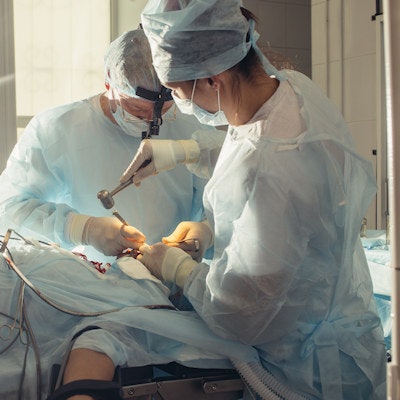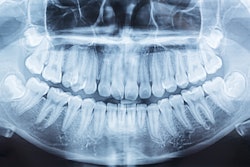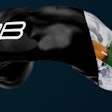
A new CAD-based referencing method that uses a digital dental scan could help reduce radiation exposure before craniomaxillofacial surgeries, according to a study published on February 7 in the International Journal of Medical Robotics and Computer Assisted Surgery.
The experimental reference method was accurate in an in vitro analysis led by Dr. Alexander Zeller, a resident in oral and maxillofacial surgery at the University of Hannover in Germany. It could obviate the need for additional computed tomography (CT) and cone-beam CT (CBCT) typically performed before intraoperative navigation procedures.
"We believe that the method described deserves consideration, as it might overcome the weaknesses and disadvantages of most currently used registration methods and avoid the additional application of radiation for navigation purposes," Zeller et al wrote.
Infrared-based navigation systems are commonly used in craniomaxillofacial surgeries to predict surgical outcomes. But these systems still usually require a preoperative referencing procedure including an additional CT or CBCT scan that exposes patients to radiation.
It's possible to use radiation dose-saving methods with CBCT, but this would still mean a significant increase in radiation. This is compounded by the fact that the patients who undergo the procedures are typically young, the authors pointed out. Furthermore, issues with accuracy -- notably misplacement navigation points -- have been reported.
"A main issue was shown to be preoperative digital malpositioning of referencing points, which can be attributed to artifacts caused by the osteosynthesis material, metallic dental restorations and to human error," the authors wrote.
All of the above limitations prompted the researchers to leverage new CAD/CAM techniques to develop a new referencing method that doesn't rely on CT or CBCT scans. Using a digital maxillary dental scan and CAD/CAM, the research team created their own version of a referencing splint with four reference points.
When the team printed out a 3D copy of the data, they matched their scanned dental model to the initial trauma CT scans. This allowed them to digitally simulate the splints position and reference points.
"These splints [stereolithography] data was imported into the navigation system," they wrote.
The CAD/CAM splint was applied to the skull of an anatomical model and proved accurate on a test involving 20 predefined periorbital points, with a mean deviation of 0.56 mm, according to the study.
"Its optimized geometry and the absence of metallic artifacts surrounding the registration points provide chances that this method may improve registration precision and accuracy," they observed.
The novel referencing aid still needs to be tested against all currently available methods and thoroughly evaluated before it could come into routine clinical use, the authors acknowledged.
"First results of the achieved accuracy of navigation in vitro are very promising," they concluded. "As requirements for CAD have decreased over the last years and biocompatible 3D printing has become readily available, the hurdles for implementing this method can be considered low."
Study disclosures
Nonprofit organization Gesellschaft der Freunde der Medizinischen Hochschule Hannover funded the study.



















